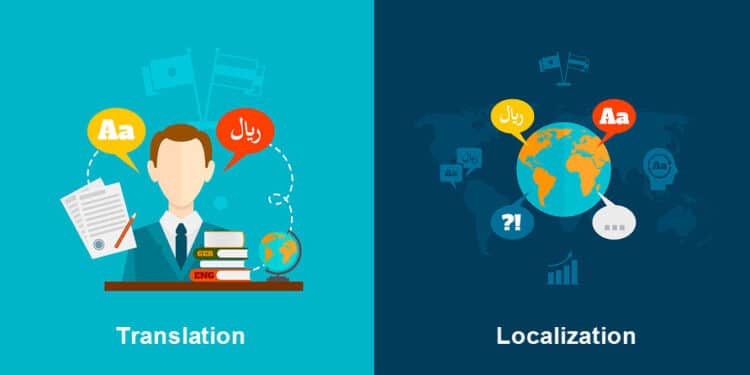Understanding the differences between these two phrases is essential before embarking on any form of translation or localization job. While translation and localization appear to be very similar at first look, there are several important distinctions to be aware of. It is critical for brands to use translation and localization services appropriately and to their advantage to compete in an increasingly global industry. Localization translation is a term that is used to understand words and sentences in different forms.
What Is Translation?
The translation is a conversion of text from one language into another language.
Translation indicates converting the text to another language while keeping the original meaning the same.
For instance:
English: what’s it called?
Spanish: ¿Cómo se llama?
In this example, the original meaning is the same. Your material will be translated into the target language while adhering to all syntax and grammar requirements. The translation is frequently used to rewrite documents.
- Scientific journals
- Medical documents
- User manuals
- Technical publications
- Training manuals
What Is Localization?
Localization is a comprehensive process that ensures correct language translations while also considering cultural obstacles, national laws, and the unique needs of the new target region. Localization translation is a service that is meant to enhance your business around the world. You need a localization service whenever you introduce the product on an online platform; to grab the attention of customers that this product is basically for them.
For instance:
American English or British English is the best example of localization.
American English: ‘restroom’ or ‘bathroom’
British English: ‘lol’ is used for specifying the same thing.
To summarise, because localization is not primarily focused on a direct translation, it ensures the usage of culturally connotative terminology.
- Spelling
- Idioms
- Expression
- Date formats
- Currency units
- Vocabulary
- Cultural referenced
- Imperial vs. metric measurement
Globalization Strategy
Want to promote awareness about the products or services to new markets’ potential customers? Eager to adjust your overall brand story to nearby societies and customs in manners that will make the association. Prepare to make global reach and local detail a critical component of your process.
- If your organization has developed a globalization plan, it should have:
- Completed foreign market targeting – determined which international markets to target initially.
- Choose the optimal language URL format to accommodate multilingual sites.
As a result, your organization has authorized budgets with an eye toward internationalization. established deadlines. KPIs have been identified.
So, what could be missing? Just one significant aspect of going global: your localization approach.
Localization Strategy
Localization strategy is how an organization adjusts its message to a specific language or culture. When entering another market, you need locally consumable sites, online media, advertising efforts, and then some. Localization strategy is your arrangement to make any required changes in tone, symbolism, and topic to effectively associate with the nearby client.
When do You need To Evolve A Global Localization Strategy?
At this point, you’ve undoubtedly realized that localization is a critical component of going global. Given that, when would it be advisable for you to consider localizing your brand image content and experience?
Global localization is something that the most successful global firms explore at the start of their globalization process. Along these lines, if you are thinking about going worldwide, you should now be thinking about how to localize most adequately and effectively.
Localization Guidelines:
Before going for localization, remember these three guidelines.
- Think ahead
- Catch up
- Keep it simple
Where Localization Service Is Used?
According to a 2014 common sense Advisory report, about 75% of customers claim that they preferred that product more which is introduced in their native language. As the localization combines language equivalency with cultural considerations, it is effectively valuable for these projects:
- E-learning platforms web proxy
- User manuals
- Software UI
- Quick reference guides
- Video game localization
- software localization
- Video game localization
- End users licensing agreements
- Mobile app localization
- Website l10n
- Multimedia
- Ebooks and I-books
- Corporate communications for global offices
- Marketing collateral l10n
The Major Difference Between Localization & Translation
The main distinction between translation and localization is that localization goes a step further by taking cultural differences into account. Localization can assist in fulfilling cultural expectations, which is particularly crucial when creating entertainment material, products, or an ad campaign for a new market. Direct translation services are more commonly employed for significant documents, such as medical texts, where it is critical to keep the original meaning.
Conclusion
In short, translation is the conversion of one text into another, localization is not just translating but also highlighting the cultural difference, national laws, etc. These two processes are critical in extending the reach of language, yet realizing how to utilize each to its maximum capacity is pivotal.
There’s always a way in digital world, so here come a “translation software” by Interpreter IO. It seems to be interesting for translation purpose, I would recommend on checking Interpreter IO.












